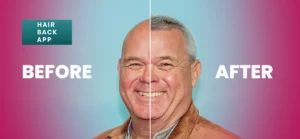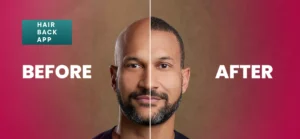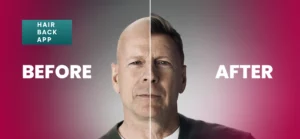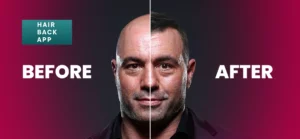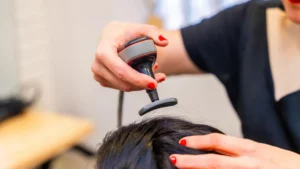Hair follicle regeneration is a fascinating area of research that has captured the attention of scientists, dermatologists, and individuals experiencing hair loss. Unlike other tissues in the body, hair follicles have a unique ability to cycle through phases of growth, rest, and shedding.
However, when this cycle is disrupted, hair loss or thinning can occur. Understanding the underlying science behind hair follicle regeneration can help uncover solutions to restore natural hair growth.
My name is Emma Wright, your resident hair transplant and restoration specialist. Today, we’ll be discussing how hair follicles regenerate, the role of stem cells, the impact of genetics and lifestyle, and advancements in treatments.
By looking at cutting-edge research, we can grasp the potential of new therapies that may revolutionize hair restoration.
How Hair Follicles Regenerate
Hair follicle regeneration is a complex biological process influenced by stem cells, hormones, and genetic factors. During fetal development, the body naturally forms hair follicles, but after birth, the ability to generate new ones diminishes. Instead, existing follicles follow a continuous cycle of growth, rest, and renewal.
This cycle is regulated by biochemical signals that activate stem cells in the follicle’s bulge region, triggering hair growth. Factors like genetics, hormonal changes, and lifestyle influence how effectively follicles regenerate.
Disruptions in this process can lead to thinning hair or baldness, making targeted treatments crucial for restoring optimal follicle function.
The Role of Stem Cells in Hair Growth
Stem cells play a fundamental role in hair follicle regeneration by maintaining the ability to generate new hair strands throughout the hair growth cycle. These specialized cells reside within the follicle bulge, a niche that serves as a reservoir of undifferentiated cells.
Unlike other skin cells, stem cells in the hair follicle remain dormant until they receive biochemical signals that trigger regeneration. Once activated, these cells proliferate and migrate to different parts of the follicle, contributing to the formation of new hair shafts and supporting the overall structure of the follicle.
One of the key regulators of this activation process is the Wnt signaling pathway, a molecular network that controls stem cell division and differentiation. When functioning correctly, this pathway ensures that hair follicles transition smoothly through their growth phases.
However, disruptions in Wnt signaling can prevent stem cells from activating, leading to follicle dormancy, thinning hair, or bald patches.
Scientists are actively researching ways to manipulate this pathway using targeted therapies, such as topical Wnt activators, platelet-rich plasma (PRP) injections, and stem cell-derived growth factors.
Unlocking the full potential of stem cells in hair follicle regeneration could lead to groundbreaking treatments for hair loss and baldness.
Understanding the Hair Growth Cycle
The hair growth cycle consists of three primary phases:
- Anagen (Growth Phase): The active stage where hair grows continuously. This phase can last several years.
- Catagen (Transition Phase): A short phase where the follicle shrinks, and hair growth slows.
- Telogen (Resting Phase): The dormant phase where the hair remains attached before eventually shedding.
When hair follicles fail to transition back into the growth phase, hair loss becomes more noticeable. Treatments that stimulate follicular activity aim to shorten the resting phase and reactivate hair growth.

Factors Affecting Hair Follicle Regeneration
Several factors determine how effectively hair follicles regenerate, including genetics, nutrition, and lifestyle.
-
The Influence of Genetics on Hair Regrowth
Genetics play a major role in hair follicle regeneration, influencing how hair follicles respond to hormones like dihydrotestosterone (DHT). In individuals with hereditary hair loss, follicles become more sensitive to DHT, causing them to shrink over time.
This miniaturization process results in thinner, weaker hair and, eventually, complete follicle dormancy.
While genetic predisposition cannot be reversed, researchers are exploring gene-editing techniques and targeted therapies to counteract hair loss at a molecular level.
-
The Role of Nutrition in Healthy Hair Growth
Proper nutrition in hair growth and health is essential for maintaining strong and healthy follicles. Key nutrients that support hair follicle regeneration include:
- Biotin and Vitamin B Complex: Essential for keratin production, which strengthens hair strands.
- Iron and Zinc: Help transport oxygen and nutrients to the follicles, preventing premature shedding.
- Omega-3 Fatty Acids: Maintain a healthy scalp environment, reducing inflammation and dryness.
Deficiencies in these nutrients can weaken hair follicles, making them more prone to shedding and slow regrowth.
-
Advancements in Hair Restoration Treatments
Innovations in regenerative medicine are reshaping how hair loss is treated. Scientists are developing advanced therapies that enhance hair follicle regeneration without invasive procedures.
Cutting-Edge Regenerative Therapies
- Platelet-Rich Plasma (PRP) Therapy: This treatment involves extracting a patient’s blood, isolating growth factors, and injecting them into the scalp to stimulate hair regrowth. PRP is particularly effective for individuals in the early stages of hair thinning.
- Stem Cell Therapy: Experimental treatments use stem cells to reactivate dormant follicles, encouraging new hair growth.
- Growth Factor Serums: Topical products containing bioengineered peptides and growth factors designed to nourish and reactivate follicles.
These therapies offer promising alternatives for those seeking to enhance hair follicle regeneration without surgery.
-
The Importance of Hairline Placement in Transplantation
For individuals considering transplantation, hairline design is a crucial factor in achieving a natural and aesthetically pleasing appearance. A well-executed hair transplant should seamlessly blend with the patient’s existing hair growth patterns, ensuring that the new follicles complement their natural hairline.
Skilled surgeons assess facial proportions, scalp structure, hair density, and even hair texture to create a balanced, symmetrical, and age-appropriate hairline. Improper placement can result in an unnatural or artificial look, making precise planning essential.
Factors like temple recession, forehead shape, and hair direction are carefully considered to replicate how hair naturally grows, enhancing the overall success of the procedure.
How Modern Transplant Techniques Are Evolving
Surgical hair restoration has advanced significantly with hair transplant innovation. Techniques such as Follicular Unit Extraction (FUE) and Direct Hair Implantation (DHI) have improved the precision of hair follicle transplantation. Unlike older methods that resulted in noticeable scarring, these new procedures allow for seamless integration of transplanted follicles.
- FUE (Follicular Unit Extraction): Individual follicles are harvested from the donor area and implanted in balding regions, minimizing scarring.
- DHI (Direct Hair Implantation): Follicles are extracted and implanted directly into the scalp without creating incisions, reducing recovery time.
These modern techniques ensure that the results look natural and long-lasting.
The Future of Hair Follicle Regeneration
With ongoing advancements in regenerative medicine and biotechnology, the future of hair follicle regeneration is promising.
-
Bioengineered Hair Follicles
Scientists are now exploring the possibility of growing hair follicles in a laboratory setting. By using stem cells, researchers aim to create fully functional follicles that can be transplanted into individuals experiencing hair loss. This revolutionary approach could eliminate the need for traditional transplants.
-
AI and Personalized Hair Restoration Treatments
Artificial intelligence is playing a role in hair restoration by analyzing scalp conditions and predicting hair growth patterns. AI-driven diagnostics can personalize treatment plans by identifying the best therapeutic options for each individual. This level of customization enhances treatment success rates.
Conclusion
Hair follicle regeneration is a complex but promising field of research. While genetic predisposition, hormonal factors, and lifestyle choices influence hair growth, advancements in hair transplant innovation, regenerative medicine, and AI-driven diagnostics are transforming hair restoration.
By focusing on factors like the hair growth cycle, optimizing nutrition in hair growth and health, and utilizing advanced therapies, individuals experiencing hair loss have more effective solutions than ever before.
With continuous research into bioengineering and personalized treatments, the potential for full hair follicle regeneration is becoming increasingly achievable.


